Bias in the workplace: How to tackle them like a pro

Although the workplace should ideally be a place of fairness and equal opportunities for all, we know that there is a pervasive issue that plagues us worldwide – bias.
Have you ever been in a meeting or brainstorming session at work where you noticed that certain individuals' ideas were consistently dismissed or overlooked? Meanwhile, others received more attention and credit for their contributions? This phenomenon may be a result of unconscious bias at play.
In such situations, the overlooked individuals might belong to different demographic groups or have different communication styles that don't align with the dominant norms in the workplace. Their ideas may be undervalued simply because they don't fit the expected mold or the conventional approach.
What is a bias in the workplace?
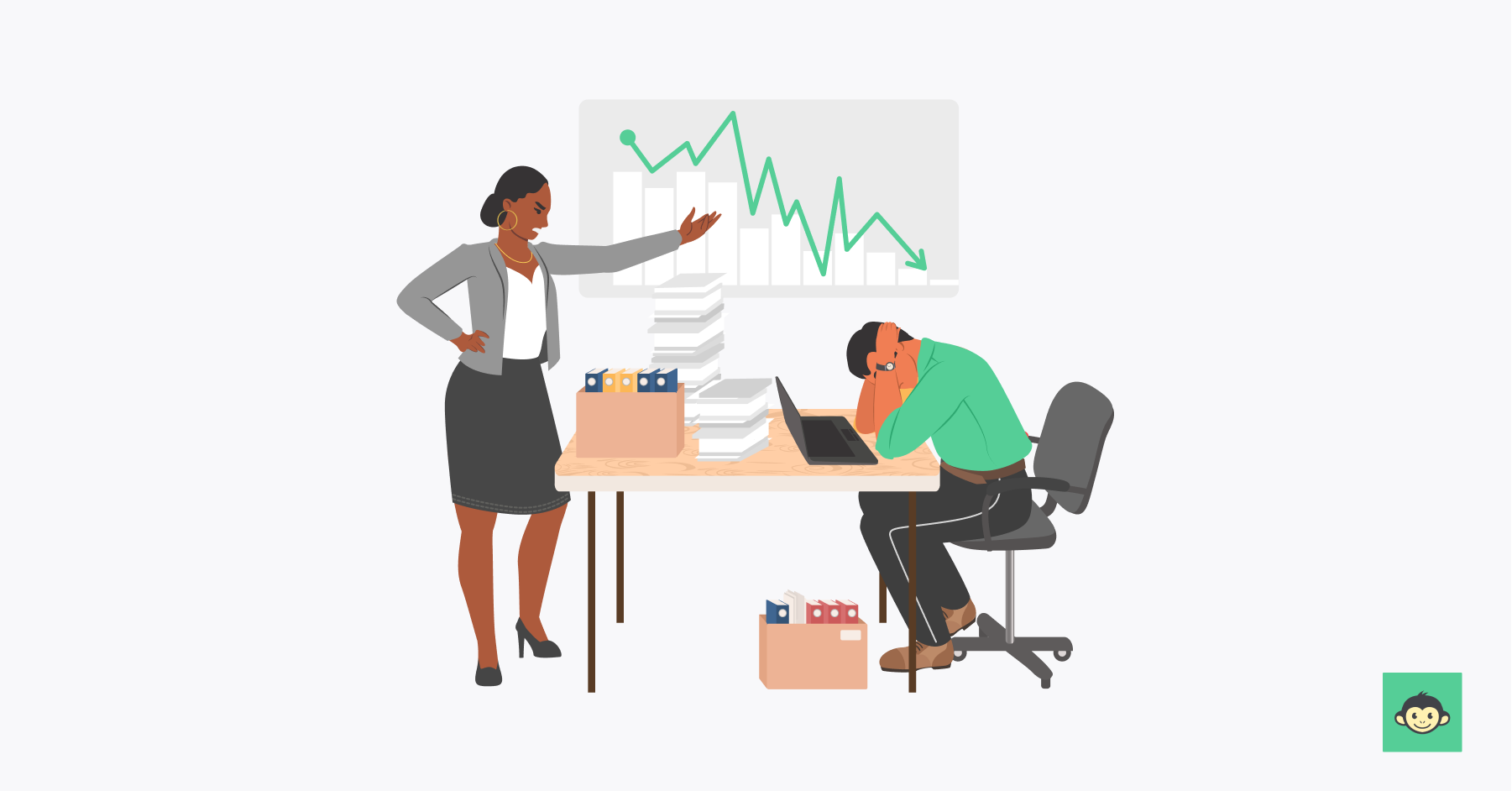
Bias in the workplace refers to the unconscious, and sometimes, conscious bias, prejudices and stereotypes that affect how individuals are perceived and treated based on various characteristics like gender, race, age, appearance, and more. These biases not only hinder individual growth but also undermine the collective potential of a workforce.
They can have a profound impact on team dynamics and innovation. It stifles diversity of thought and discourages individuals from sharing their unique perspectives, ultimately leading to missed opportunities for growth and creativity within the organization.
The danger of bias in the workplace and when hiring
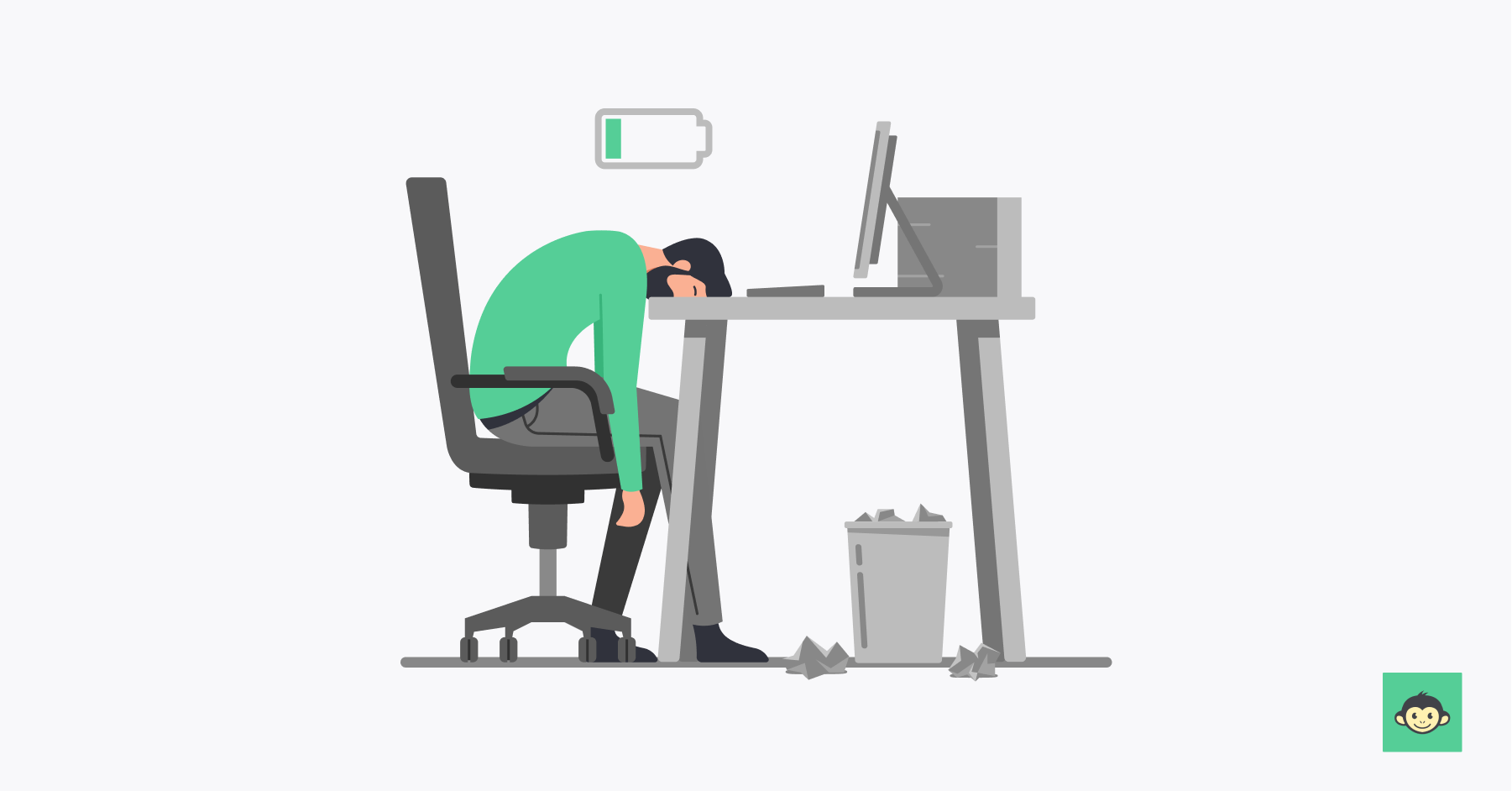
Imagine your workplace as a team sport, where each player brings unique skills to the game. Bias is like a blindfold that prevents us from seeing the full potential of our teammates. If we let bias rule, we risk missing out on valuable contributions from our diverse team members.
When it comes to hiring new talent, bias can lead us to favor people who remind us of ourselves or those who come from similar backgrounds. It's like picking players for your team based on how well they resemble the current players, rather than their actual abilities.
This can create a lack of diversity which stifles innovation and limits the magic of creativity! Just like in sports, having players with different strengths and playing styles makes the team stronger. In the workplace, diversity brings fresh perspectives and innovative ideas, making us more competitive and adaptable.
Another pitfall of bias in hiring is that it may unknowingly influence our hiring decisions, against candidates from underrepresented groups. It's like passing up star players just because they don't fit the mold we're used to seeing.
But don't worry; there are ways to be bias-busters and build an inclusive dream team! How? By recognizing that we all have biases, and that's okay. The key is to be aware of them and take steps to overcome them.
By using fair and consistent hiring practices, like structured interviews and objective criteria, we can focus on the skills and qualifications that truly matter. It's like having a playbook that guides us to assess each player fairly and based on their individual merits.
Building a workplace free from bias is an ongoing process that requires commitment. Training sessions and workshops can help team members recognize and address their biases, fostering a culture of inclusivity.
Additionally, seeking diverse perspectives in decision-making processes can bring about a more well-rounded and comprehensive approach to problem-solving. Remember, the goal is not just to avoid bias but to actively promote diversity and inclusion, unlocking the full potential of every player on our team.
How do you recognize bias in the workplace?

Recognizing bias in the workplace requires self-awareness and a willingness to critically examine our own assumptions, thoughts, attitudes, and behaviors. Here are some key steps to help identify bias:
Educate yourself
Stay informed about various types of bias that can exist in the workplace, such as gender bias, racial bias, age, recognize unconscious bias,, and more. Understand how bias can manifest in subtle ways, as well as in more overt and explicit forms.
Examine your own beliefs
Reflect on your personal beliefs and values. Consider if you have any preconceived notions or stereotypes about certain groups of people. Be open to acknowledging and challenging your own biases.
Listen and observe
Pay attention to how people are treated and spoken about in the workplace. Observe if certain individuals or groups are consistently given more or less attention, opportunities, or responsibilities based on factors unrelated to their performance.
Analyze decision-making processes
Review your own decision-making processes and those of the hiring manager and others in the organization. Are decisions based on objective criteria, or are there instances where bias might be influencing choices, such as in hiring, promotions, or project assignments?
Seek feedback
Encourage open communication within the workplace and seek feedback from colleagues and team members. They may provide valuable insights into situations where bias might be at play, even if unintentional.
Conduct anonymous surveys
Implement anonymous surveys to collect feedback from employees about their experiences and perceptions of bias in the workplace. This can provide valuable data to identify areas of improvement.
Promote inclusive policies
Evaluate the organization's policies and practices to ensure they promote diversity and inclusion. This includes recruitment strategies, employee development programs, and diversity training initiatives.
Establish a supportive environment
Foster an environment where employees feel comfortable raising concerns about bias and discrimination. Encourage open discussions and provide resources for employees to learn about and address bias effectively.
Stay open to change
Be receptive to feedback and willing to make necessary changes to address bias in the workplace. Creating a culture that actively combats bias requires a commitment to continuous improvement.
Promote diverse role models
Highlight and celebrate diverse role models within the organization. This can challenge stereotypes and inspire employees from various backgrounds to aspire to leadership roles, contributing to a more inclusive corporate culture.
Establish clear reporting mechanisms
Ensure there are clear and confidential reporting mechanisms for instances of bias or discrimination. This empowers employees to come forward without fear of retaliation, allowing the organization to address and rectify issues promptly.
Regularly review and update policies
Commit to regular reviews of diversity and inclusion policies, updating them to reflect evolving workplace dynamics and societal changes. This proactive approach demonstrates a dedication to staying ahead of potential biases and fostering a truly inclusive workplace environment.
Encourage intersectional perspectives
Acknowledge and embrace intersectionality in discussions about bias. Recognize that individuals may face compounded forms of discrimination, and actively seek to understand and address these intersecting factors in the workplace.
Implement bias training for all employees
Make bias training mandatory for all employees, from entry-level staff to leadership. This ensures that everyone is equipped with the knowledge and tools to recognize and mitigate bias, fostering a more conscious and inclusive workplace.
Remember, recognizing bias is a crucial first step toward creating a more inclusive and equitable workplace. It's an ongoing journey that requires vigilance and a collective effort from everyone in the organization.
What are the 5 examples of bias?
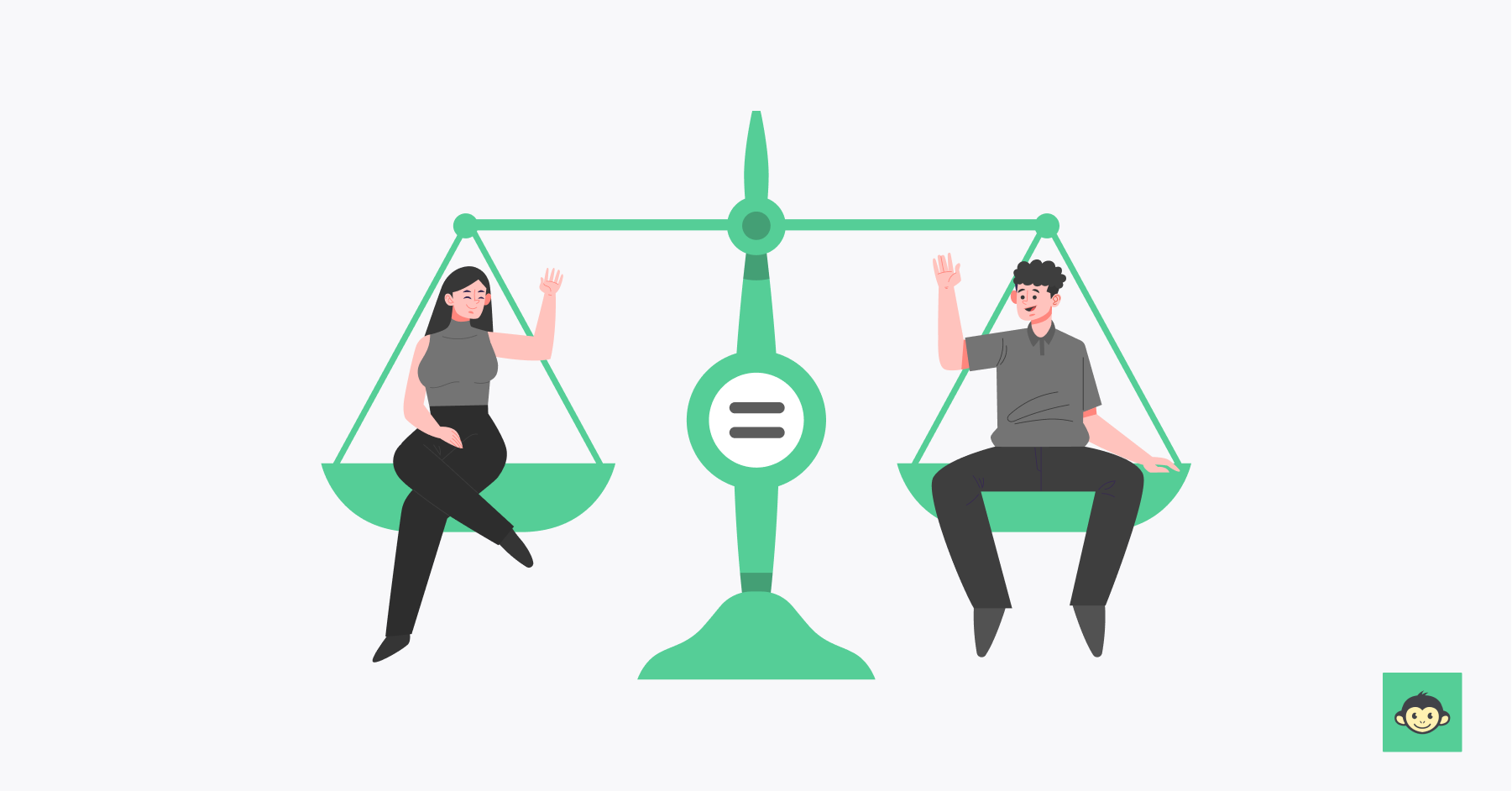
1. Gender bias
This occurs when individuals hold preconceived notions or other biases or stereotypes about people based on their gender. For example, assuming that women are less competent in technical roles or that men are better suited for leadership positions.
2. Racial bias
This refers to prejudices and stereotypes based on a person's race or ethnicity. It can manifest in various ways, such as assuming certain racial groups are more prone to criminal behavior or are less intelligent than others.
3. Age bias (Ageism)
Ageism involves treating people differently based on their age, often leading to discrimination against both younger and older individuals. For instance, assuming that older employees are less adaptable to change or that younger workers lack experience.
4. Confirmation bias
This is the tendency to favor information that confirms our existing beliefs while ignoring or dismissing evidence that contradicts them. It can lead to a closed-minded approach and hinder our ability to consider alternative viewpoints.
5. Beauty bias
Beauty bias occurs when individuals are treated differently based on their physical appearance. For instance, favoring more attractive candidates during hiring processes, which can impact opportunities for others based solely on their looks.
These examples represent just a few of the many biases that can influence our perceptions, decisions, and interactions with others. Recognizing and addressing these biases is essential for fostering a fair and inclusive environment where everyone can thrive based on their merits and abilities.
Conscious bias Vs. unconscious bias

Conscious bias and unconscious bias are distinct forms of biases that individuals may exhibit in various aspects of their lives, including the workplace. Understanding the differences between these biases is essential for fostering an inclusive and equitable environment.
- Definition of conscious bias: Conscious bias, also known as explicit bias, refers to deliberate and intentional prejudices that individuals are aware of possessing. This type of bias is a result of personal beliefs, attitudes, and stereotypes that consciously influence decision-making.
- Examples of conscious bias: Examples of conscious bias include overt discriminatory behaviors, such as favoritism based on personal preferences, explicit prejudices, and discriminatory language or actions. Individuals exhibiting conscious bias are fully aware of their discriminatory attitudes.
- Definition of unconscious bias: Unconscious bias, or implicit bias, refers to biases that individuals harbor unconsciously, without intentional awareness. These biases are often ingrained in societal stereotypes and can influence perceptions, decisions, and behaviors in subtle ways.
- Examples of unconscious bias: Unconscious biases manifest in subtle ways, such as making assumptions about a person's abilities based on their gender, race, or age. It can also influence hiring decisions, performance evaluations, and interactions without individuals being consciously aware of these prejudices.
- Origins of conscious bias: Conscious biases often stem from personal experiences, upbringing, cultural influences, and societal norms. Individuals may consciously adopt certain biases based on their beliefs, values, and exposure to particular perspectives.
- Origins of unconscious bias: Unconscious biases are deeply rooted in societal conditioning and cultural influences. They often develop unconsciously as individuals absorb and internalize stereotypes from their surroundings, media, and societal narratives.
- Impact on decision-making: Conscious bias significantly influences intentional decision-making processes, leading to overtly discriminatory actions. In contrast, unconscious bias subtly shapes decisions without individuals recognizing the influence it has on their choices.
- Addressing conscious and unconscious bias: While conscious bias can be addressed through education, training, and awareness programs, unconscious bias requires a more nuanced approach. Unconscious bias training and creating awareness about these hidden biases can help individuals recognize and mitigate their impact on decision-making.
What are unconscious biases in the workplace?
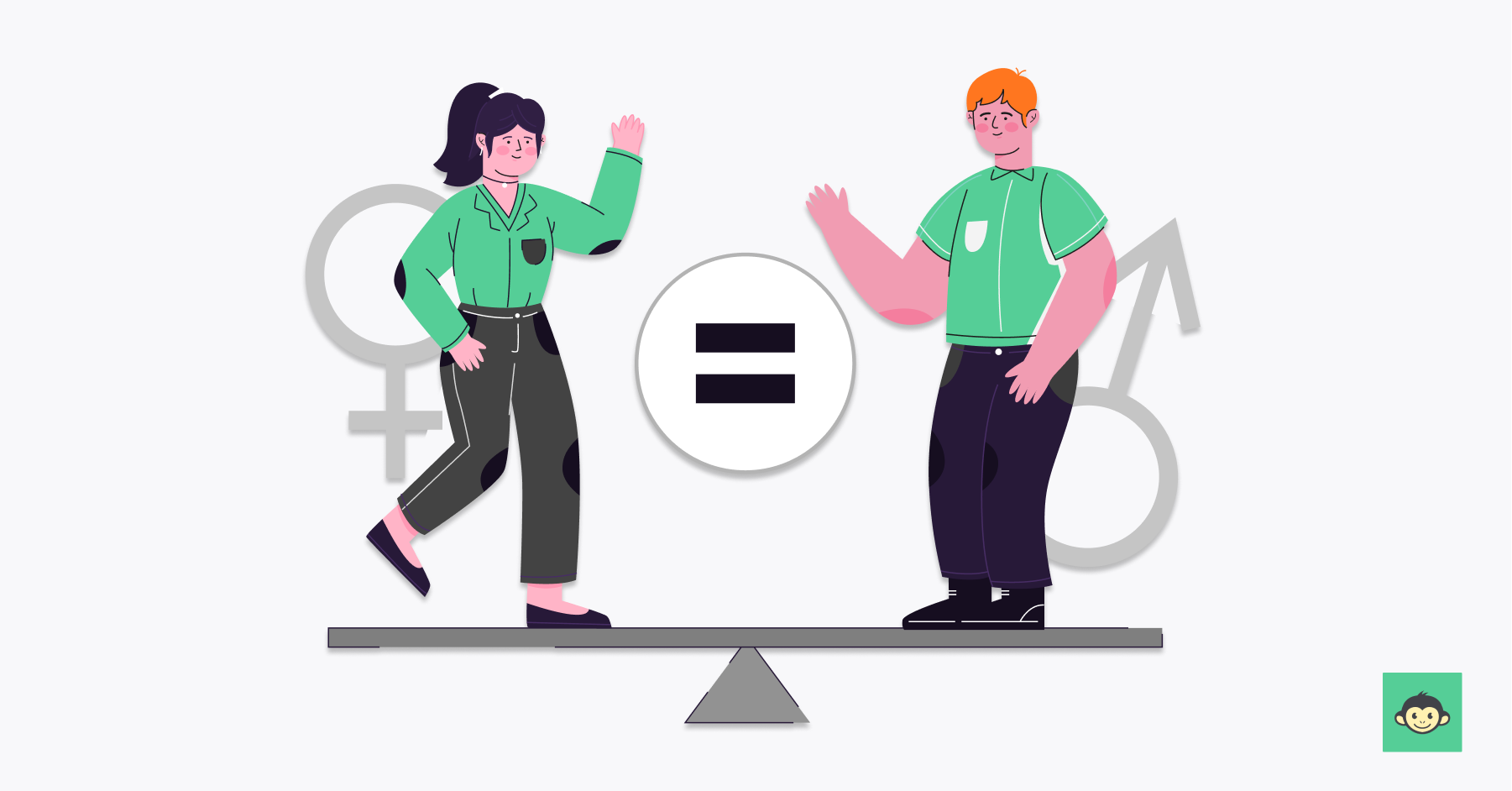
Unconscious bias, also called implicit bias, refers to the attitudes, beliefs, and stereotypes that we hold about certain groups of people on an unconscious level.
These biases are often deeply ingrained in our minds through societal influences, upbringing, media, and personal experiences. Importantly, they can influence our judgments and decisions without us being aware of it.
In the workplace, unconscious bias can affect how we perceive and treat our colleagues, employees, clients, and job candidates. It can impact various aspects of work, including hiring, promotions, performance evaluations, project assignments, and even day-to-day interactions.
Some common types of unconscious bias in the workplace include:
Affinity bias
Affinity bias, also known as similarity bias or in-group bias, is a form of unconscious bias where individuals tend to favor and show a preference for people who are similar to themselves.
This bias is rooted in human psychology, as we naturally feel more comfortable and trusting toward those who share similar characteristics, backgrounds, experiences, or interests.
Halo/horn effect
Forming an overall positive (halo) or negative (horn) impression of a person based on a single characteristic or trait, without considering other aspects of their abilities or performance.
Stereotyping
Assigning certain traits or characteristics to individuals based on their membership in a particular group (e.g., assuming that all members of a certain ethnicity are good at math).
Attribution bias
Attributing success or failure to internal factors for certain groups while attributing external factors for others. For example, attributing an individual's success to innate talent rather than hard work or vice versa.
Unconscious bias can lead to unfair treatment, hinder diversity and inclusion efforts, and create a less inclusive and productive work environment. We’ll talk about how to mitigate the impact of unconscious bias in the next section.
How can unconscious bias undermine the success of a team?
Unconscious bias, though often unintentional, can significantly undermine the success of a team in various ways, impeding collaboration, hindering innovation, and contributing to a less inclusive work environment.
- Reduced diversity of thought: Bias limits the diversity of thought within a team. When team members unconsciously favor ideas that align with their own perspectives, it stifles innovation and creativity by excluding alternative viewpoints and solutions.
- Negative impact on morale: Unconscious bias can create an atmosphere of unfairness and inequality, negatively affecting team morale. Team members who perceive bias may disengage or feel undervalued, diminishing overall team cohesion and performance.
- Inequitable opportunities: Unconscious bias can lead to inequitable distribution of opportunities within a team. Certain individuals may be favored for projects, promotions, or skill development based on biases rather than merit, contributing to a less diverse and dynamic team.
- Undermined collaboration: Bias can erode trust and collaboration among team members. When individuals perceive that their contributions are undervalued or unfairly assessed, it hampers effective teamwork and the ability to leverage the collective skills of the team.
- Increased turnover: The presence of unconscious bias can lead to increased turnover as team members, particularly those who feel marginalized, may seek more inclusive work environments. This turnover disrupts team dynamics and can result in the loss of valuable talent.
- Impact on employee well-being: Unconscious bias can negatively affect the well-being of team members who experience bias. This can lead to stress, anxiety, and diminished job satisfaction, ultimately impacting individual and team performance.
- Strained interpersonal relationships: Bias can strain relationships among team members, fostering a tense and unproductive work environment. This strained interpersonal dynamic can impede effective communication and collaboration, hindering the team's overall success.
- Failure to recognize talent: Unconscious bias may result in the overlooking of talented individuals within the team. When biases influence recognition and reward systems, it can hinder the identification and cultivation of diverse skill sets, limiting the team's potential.
- Missed opportunities for innovation: Teams that succumb to unconscious bias may miss out on the benefits of diverse perspectives, hindering innovation. Embracing diverse ideas and experiences is crucial for staying competitive and adaptable in today's dynamic business landscape.
How to tackle implicit bias in your workplace?

Organizations can implement bias-awareness training, promote diverse hiring practices, and encourage a culture of openness and inclusivity where biases can be openly discussed and addressed.
Tackling unconscious bias in the workplace requires a concerted effort from both individuals and organizations. Here are some effective strategies to address and mitigate unconscious bias:
Raise awareness
Start by educating employees about unconscious bias, its impact, and how it can influence decision-making. Conduct workshops, training sessions, or presentations to raise awareness and promote open discussions.
Encourage self-reflection
Encourage employees to reflect on their own biases and how they may unconsciously affect their perceptions and behaviors. Creating a culture of self-awareness is essential in fostering change.
Diverse hiring and promotion practices
Implement structured and standardized hiring processes that focus on skills, qualifications, and relevant experience. Include diverse interview panels to reduce the influence of individual biases.
Blind resume review
Consider using blind resume reviews, where personal information such as name, gender, and age is redacted from resumes during the initial stages of the hiring process. This helps evaluate candidates solely based on their qualifications.
Diversity training
Provide training for all employees. This should go beyond awareness-building to include actionable strategies for identifying and challenging biases.
Establish inclusive policies
Develop and enforce inclusive policies that promote diversity and equity in the workplace. This may include policies related to flexible work arrangements, family leave, and equal pay.
Set clear criteria for performance evaluation
Establish objective and measurable criteria for performance evaluations to reduce the influence of subjective biases. Train managers on how to conduct fair and unbiased evaluations.
Promote employee engagement
Encourage employees to actively participate in decision-making processes and provide feedback on workplace practices. Involve employees in discussions about diversity and inclusion initiatives.
Address microaggressions
Create a work culture where microaggressions are not tolerated. Empower employees to address and report instances of bias in a safe and supportive environment.
Measure progress
Regularly assess and measure progress in tackling unconscious bias within the organization. Use metrics to track improvements in diversity, employee satisfaction, and inclusivity.
Lead by example
Leaders play a crucial role in setting the tone for an inclusive workplace. They should actively demonstrate their commitment to addressing bias and promoting diversity.
Encourage intersectional dialogue
Promote open conversations about intersectionality, acknowledging the complex interplay of various identities. This can help employees understand the unique challenges faced by individuals with intersecting marginalized identities.
Establish affinity groups
Encourage the formation of affinity groups within the organization where employees with shared identities or experiences can connect and support each other. These groups provide a sense of community and can serve as valuable resources for feedback and initiatives.
Remember, addressing unconscious bias is an ongoing journey that requires continuous effort and commitment from everyone in the organization. Invest in unconscious bias training to help employees recognize and address their hidden prejudices to foster a more inclusive and equitable workplace.
How to overcome prejudice in the workplace?

Overcoming prejudice in the workplace is a critical endeavor that demands intentional efforts, dedication, and a commitment to fostering an inclusive environment. Prejudice, whether explicit or implicit, can hinder productivity, creativity, and employee satisfaction.
Addressing this issue requires a multifaceted approach that encompasses education, policy development, and sustained cultural change.
- Educate and sensitize: One of the primary steps in overcoming prejudice is to provide comprehensive education and training to all employees. Conduct workshops and training sessions that delve into the various forms of prejudice, including unconscious biases and stereotypes.
- Establish clear policies: Develop and enforce explicit policies that condemn prejudice in all its forms. These policies should extend to hiring, promotion, and everyday interactions within the workplace.
- Promote diverse leadership: Actively work towards diversifying leadership roles within the organization. When leadership reflects diversity, it sends a powerful message that the company values and promotes inclusivity.
- Implement fair recruitment practices: Ensure that recruitment processes are structured to minimize the impact of biases. Adopt blind recruitment techniques, where personal information unrelated to job qualifications is redacted during initial stages.
- Encourage reporting mechanisms: Establish clear and confidential reporting mechanisms for instances of prejudice or discrimination. Empower employees to report incidents without fear of retaliation.
- Foster inclusive communication: Encourage open communication that values diverse perspectives. Create platforms for employees to voice their opinions, concerns, and suggestions, fostering an atmosphere where every voice is heard and respected.
- Regularly evaluate and adjust: Continuously assess the effectiveness of diversity and inclusion initiatives. Use this information to make informed adjustments to policies and practices, ensuring that the organization remains proactive in its pursuit of inclusivity.
- Provide continuous learning opportunities: Offer ongoing learning opportunities for employees to stay informed about evolving issues related to diversity, equity, and inclusion. This includes training on cultural competence, sensitivity, and unconscious bias.
- Celebrate diversity: Actively celebrate diversity within the organization. Recognize and commemorate cultural awareness days, fostering an atmosphere of appreciation and understanding.
How can acknowledging that you have biases help company culture?
Acknowledging personal biases positively impacts workplace culture by fostering self-awareness, promoting inclusivity, and enhancing overall team dynamics. When individuals recognize and admit to their biases, it signifies a commitment to personal growth and a willingness to contribute to a more equitable environment.
Firstly, acknowledging biases cultivates self-awareness among employees. This heightened self-awareness enables individuals to consciously identify and confront their biases, preventing these unconscious prejudices from influencing decision-making processes.
Secondly, it promotes inclusivity by creating a culture where individuals feel comfortable discussing and addressing biases openly. This openness encourages honest conversations about diversity, fostering understanding and empathy among team members.
Moreover, acknowledging biases enhances team dynamics. When team members are aware of their biases, they can actively work towards mitigating their impact on collaboration, decision-making, and communication. This contributes to a more cohesive and harmonious work environment.
How can you reduce bias, prejudice and discrimination?
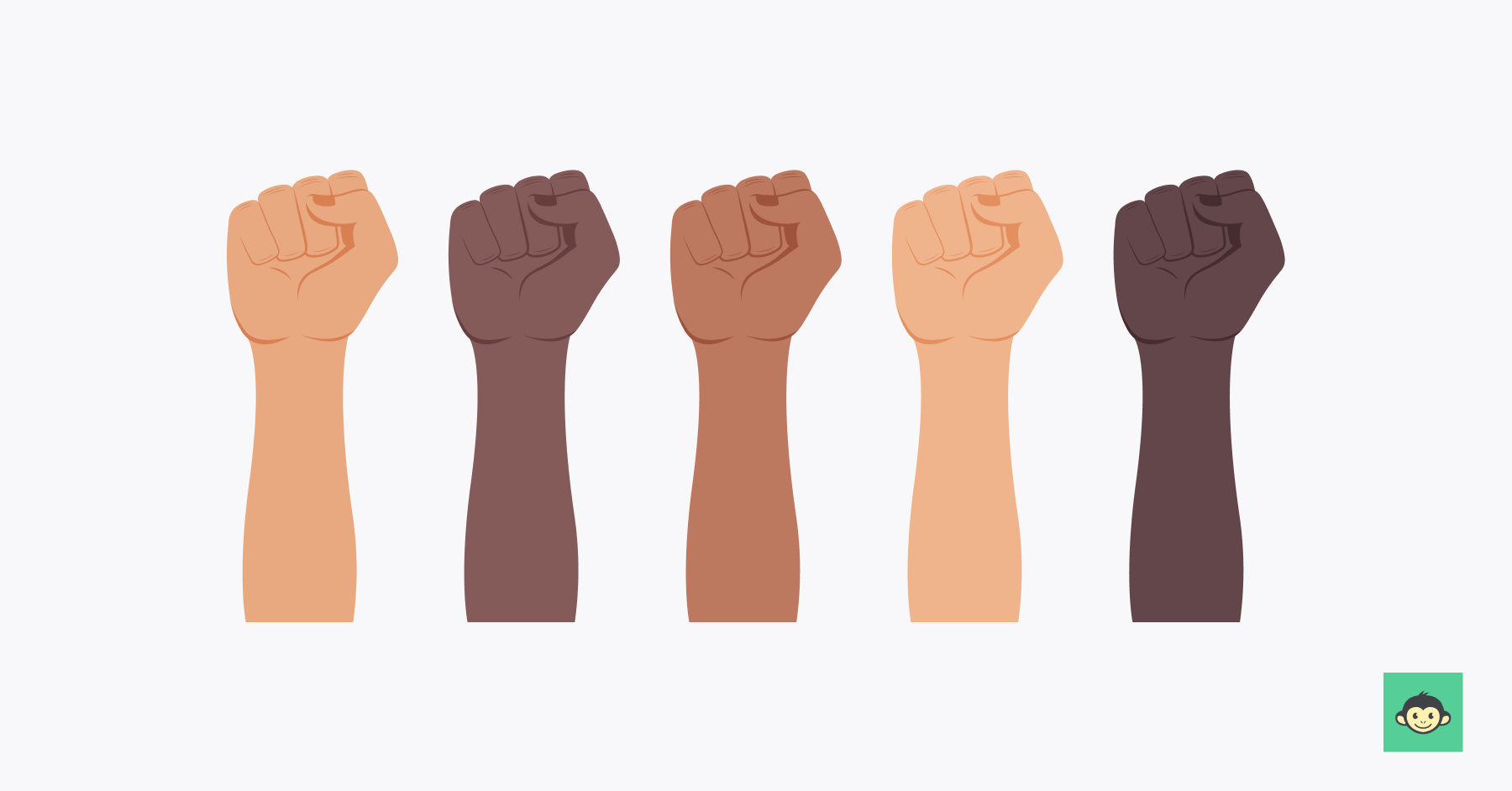
Reducing bias, prejudice, and discrimination requires a multifaceted approach that involves individual actions, organizational initiatives, and broader societal efforts. Here are some additional strategies to complement the ones mentioned earlier:
Promote intergroup contact
Encourage opportunities for employees from different backgrounds to interact and collaborate. Working together on projects or participating in team-building activities can break down barriers and foster understanding between individuals.
Mentorship and sponsorship programs
Establish mentorship and sponsorship programs that connect individuals from underrepresented groups with more experienced colleagues. These programs can help provide guidance, support, and career advancement opportunities to those who may face systemic barriers.
Diverse leadership development
Create tailored leadership development programs that cater to the needs and challenges faced by individuals from diverse backgrounds. Investing in their growth and professional advancement can lead to a more diverse leadership team.
Checklists and evaluation rubrics
Implement standardized checklists and evaluation rubrics for hiring, promotions, and performance evaluations. These tools can help reduce subjective biases and ensure a more objective and consistent assessment process.
Collect and analyze data
Regularly collect and analyze demographic data on hiring, promotions, and employee turnover to identify potential disparities. Use this data to inform targeted diversity and inclusion strategies.
Employee resource groups (ERGs)
Support the creation of Employee Resource Groups where individuals from similar backgrounds or with shared interests can connect, share experiences, and advocate for change within the organization.
Cultural competency training
Offer cultural competency training to employees to enhance their understanding of different cultures and perspectives. This can help increase empathy and reduce harmful stereotypes.
Address biases in artificial intelligence (AI) and technology
Be vigilant about potential biases in AI algorithms used in hiring, performance evaluations, or decision-making processes. Regularly audit and update these technologies to ensure fairness and equity.
Inclusive language and communication
Encourage the use of inclusive language in workplace communications and interactions. Avoiding gender-specific language, for example, can help create a more inclusive and welcoming environment.
Publicize success stories
Celebrate success stories of employees from diverse backgrounds to highlight the value of inclusivity and create positive role models for others.
The ways managers can work to reduce stereotyping include

Reducing stereotyping in the workplace is a crucial responsibility for managers, as their influence significantly shapes the organizational culture. By implementing specific strategies, managers can work towards fostering an environment that is free from stereotypes and promotes diversity and inclusion.
- Lead by example: Managers play a pivotal role in setting the tone for acceptable behavior within the team. By demonstrating inclusive behavior and embracing diversity in their decision-making, managers serve as role models for the entire workforce.
- Conduct unbiased performance evaluations: Provide training for managers on conducting fair and unbiased performance evaluations. This ensures that assessments are based on objective criteria, minimizing the impact of stereotypes on professional advancement.
- Promote mentorship programs: Establish mentorship programs that connect employees from diverse backgrounds. Mentorship fosters understanding, breaks down stereotypes, and provides opportunities for professional growth under the guidance of experienced colleagues.
- Address microaggressions promptly: Managers should promptly address any microaggressions observed within the team. This involves actively listening to concerns, investigating incidents, and taking appropriate corrective actions to maintain a respectful and inclusive workplace.
- Foster a culture of inclusivity: Actively foster a culture that celebrates diversity and values each team member for their unique contributions. Managers can organize events, recognize cultural awareness days, and promote inclusive language to create an inclusive work environment.
- Measure and monitor progress: Implement metrics to measure progress in reducing stereotyping within the team. Regularly monitor the effectiveness of initiatives and adjust strategies accordingly to ensure a continuous commitment to diversity and inclusion.
What can HR leaders do to address unconscious bias in the workplace?

HR leaders bear a significant responsibility when it comes to tackling unconscious bias within the workplace. To foster inclusivity, they can implement effective strategies. Firstly, they can embrace "blind" recruitment methods, removing any identifying information from candidate applications to focus solely on skills and qualifications.
Secondly, encouraging employees to participate in diversity training and workshops helps raise awareness of biases and equips them with strategies to challenge these biases effectively. Moreover, supporting employee resource groups that represent underrepresented communities provides a platform for open dialogue and exchange of perspectives.
HR leaders can also take the initiative to review and update company policies, ensuring they are free from any discriminatory language and cater to the diverse needs of the workforce.
Lastly, forming partnerships with outside organizations and consultants specializing in diversity and inclusion provides expert guidance tailored to the organization's unique challenges and opportunities.
By proactively adopting these strategies, HR leaders can create a workplace culture that genuinely values diversity, equity, and belonging, leading to a positive impact on both employees' experiences and overall organizational success.
What is unconscious bias training?

Unconscious Bias Training is a specialized educational program designed to increase awareness and understanding of unconscious biases that individuals may harbor. These biases, often rooted in societal stereotypes, can influence decision-making processes, interactions, and behaviors in the workplace.
The primary goal of this training is to equip participants with the knowledge and tools necessary to recognize and mitigate the impact of unconscious biases.
This training typically involves interactive sessions, workshops, and presentations led by experienced facilitators. Participants engage in discussions, case studies, and self-reflection exercises to explore how biases can manifest and affect their perceptions of others.
By creating a safe space for open dialogue, Unconscious Bias Training encourages participants to acknowledge and confront their own biases.
The curriculum often covers various forms of bias, such as gender, racial, age, and affinity biases, providing practical strategies for reducing their impact.
The training emphasizes the importance of fostering a diverse and inclusive work environment, where individuals are judged based on their merits rather than preconceived notions.
Ultimately, Unconscious Bias Training plays a vital role in promoting a more conscious and equitable workplace culture.
By enhancing participants' awareness and providing actionable insights, organizations can work towards minimizing the negative effects of unconscious bias, fostering diversity, and promoting a more inclusive and harmonious professional environment.
Conclusion
In the quest for building thriving, inclusive workplaces, addressing unconscious bias emerges as a crucial imperative. HR leaders stand at the forefront of this transformative journey, armed with powerful tools to challenge biases and create a culture that embraces diversity and fosters inclusivity.
One such tool that can significantly contribute to this effort is CultureMonkey's engagement software.
With CultureMonkey, you can empower your organization to send customizable DEI surveys, allowing you to listen to the honest feedback of your diverse workforce. By analyzing their perspectives on inclusion, you can identify areas for improvement and take proactive steps to address DEI concerns.
By leveraging the insights provided by CultureMonkey, you can promote diversity, equity, and inclusion at your workplace, creating an environment where every employee feels valued and empowered.
As unconscious bias is slowly but surely chipped away, organizations will reap the rewards of a truly diverse and empowered workforce. The ripple effects of these efforts will be felt in heightened creativity, innovation, and collaboration, leading to a more competitive and compassionate workplace.



